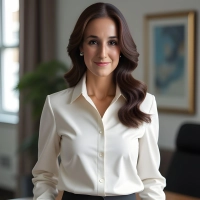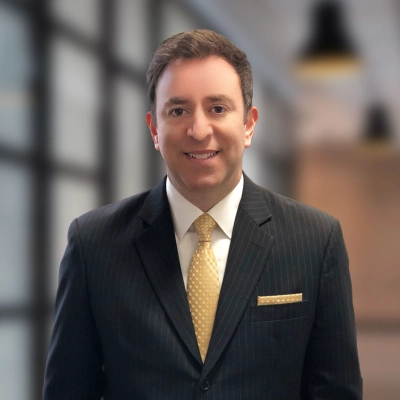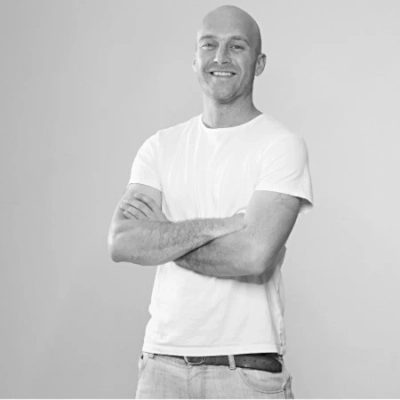Starting a business can be financially challenging, but expert advice can make a significant difference. This article presents key financial strategies for new entrepreneurs, drawing from the wisdom of seasoned professionals. These insights will help first-time business owners build a strong financial foundation and navigate the complexities of entrepreneurship.
- Build a Self-Funding Business Model
- Prioritize Cash Flow Over Profit
- Focus on Generating Revenue Quickly
- Maintain Liquidity and Financial Visibility
- Create a Stable Financial Foundation
- Separate Business and Personal Finances
- Automate Savings for Taxes and Emergencies
- Develop Recurring Revenue Streams
- Master Your Financial Reports
- Set Aside Taxes Immediately
- Cut Personal Expenses While Bootstrapping
- Keep Burn Rate Low Longer Than Expected
- Build Wealth Through Strategic Investments
- Control Cash Flow to Control Business
- Invest in Stock Market for Passive Income
- Ensure Profitable Unit Economics
- Grow Slowly with a Debt-Free Approach
- Pay Yourself First for Purchases
Build a Self-Funding Business Model
I’ve built five companies, and one piece of financial advice that made a lasting impact on me early on was to build the business so it can fund itself—even if you plan to raise money later.
That may sound simple, but when you’re a first-time entrepreneur, it’s easy to build around the idea of future capital instead of the reality of your current resources. In my current field, I’ve seen founders map out roadmaps that only work if they land outside funding. That is not necessarily bad, but the problem is that this kind of thinking creates dependency.
When I was starting out, I was advised to build with profitability in mind from day one. So, I kept overhead lean, focused on early monetization, and avoided features or hires that were unnecessary at the moment. Ironically, it made us more attractive to investors later because the business already had momentum and didn’t need the money to survive.
What I tell founders now is to avoid building a company that only works if everything goes right. They should build one that works even when things get hard. If you can show that your business model holds up without external funding, you’re in a stronger position, not just financially, but strategically down the line.
 Jeff Mains
Jeff Mains
Founder and CEO, Champion Leadership Group
Prioritize Cash Flow Over Profit
As a first-time entrepreneur, the best advice I received about money was: “Treat cash flow like oxygen—not profit.”
When I launched my company, my early focus on margins and growth set the company up for stagnant cash flow. I have to admit that I made the rookie mistake of not focusing completely on the pressure of cash for day-to-day operations, especially when bulk purchasing products for our seasonal hampers. That advice really changed my frame of reference. After that, I started forecasting cash flow on a weekly, instead of monthly, basis and added a small buffer fund for emergency supply delays or unexpected marketing spikes.
What was the difference? We avoided stockouts at peak seasons, and we were able to scale up with confidence and without financial panic!
So here’s my message to you: use simple tools like spreadsheets or apps to track your cash inflows and outflows on a weekly basis—like clockwork. Don’t wait until there’s a crisis—establish financial habits early on that build you some breathing space. Profit is your scoreboard, but cash flow is your lifeblood.
 Mary Case
Mary Case
Founder, The Happy Food Company
Focus on Generating Revenue Quickly
When starting a business, the only thing that matters is getting to revenue as quickly and as cheaply as possible. Everything else is just fake business that makes you feel busy or look the part—like hiring social media interns, building out fancy decks, or spending weeks on a logo.
This advice shaped how we built our lending and asset management business. From the start, our focus was simple: originate loans, resolve assets, generate cash. We didn’t overhire or overbuild. We proved the model by bringing in revenue, and we reinvested from there. It kept us disciplined. No vanity metrics, no distractions, just making sure money was coming in the door.
If you’re just starting out, I’d tell you this: skip the fluff. Revenue is the only thing that will keep the lights on and show you if your idea actually works. Everything else can wait.
 Ricardo Sims
Ricardo Sims
CEO, Constitution Lending
Maintain Liquidity and Financial Visibility
One piece of financial advice that stuck with me early in my entrepreneurial journey was: “Revenue is vanity, profit is sanity, but cash is king.” As a first-time entrepreneur, it’s easy to get caught up in top-line growth and assume success is tied to how fast your business scales. But this advice taught me to focus on sustainable profitability and, more importantly, cash flow. It changed how I approached financial planning—I became more disciplined about forecasting, managing working capital, and building a runway.
For others, I’d recommend prioritizing liquidity and setting up systems that give you real-time visibility into your finances. Make decisions based on data, not assumptions, and always plan for the unexpected—because profitability on paper means nothing if you can’t meet your obligations in practice.
 Gary Jain
Gary Jain
CEO, Ledger Labs
Create a Stable Financial Foundation
One of the most valuable pieces of financial advice I received as a first-time entrepreneur was: “Don’t mistake revenue for stability.” Early on, when cash flow started looking good, I assumed we had more breathing room than we actually did. But I remember someone I look up to said to me, “Until your revenue is predictable and repeatable, every dollar should have a job and most of it should be buying you time, not lifestyle.”
That completely reframed how I approached financial planning. Instead of ramping up spending just because we had a good month, I started building a runway mindset: prioritizing reserves, automating profit margins, and structuring payments to create consistency. It made us more resilient, especially during lean quarters or when deals got delayed.
My recommendation to other founders? Get disciplined early. Separate operating cash from personal income, forecast pessimistically, and don’t let early wins make you sloppy. Stability doesn’t come from revenue spikes; it comes from knowing your burn, your buffer, and your ability to make clear decisions without chasing every check. That mindset will keep you in the game long enough to win.
 Daniel Haiem
Daniel Haiem
CEO, App Makers LA
Separate Business and Personal Finances
The best financial advice I received was: “Don’t count future income—only what’s in your account.”
When I first launched my construction company, I planned around incoming payments—invoices that were “on the way.” It felt safe at the time because we had multiple signed contracts and loyal clients. But then one large payment was delayed for over a month due to an internal error on the client’s side. In the meantime, I had already committed to materials, wages, and a new subcontractor. That delay nearly collapsed the entire project.
That was a hard but valuable lesson. From that point on, I changed our entire cash flow structure. I started tracking real-time cash availability, not projections. I built a rolling reserve, made prepayments mandatory for some work phases, and adjusted timelines to stay ahead of obligations, not behind them.
It completely changed how I thought about financial planning. I stopped relying on growth and focused on stability first. Growth followed once the foundation was healthy.
To other new entrepreneurs, especially in service or project-based businesses: don’t confuse paper money with available capital. Always protect your margin. If you manage risk like a pessimist and execute like an optimist, your business will survive much longer than most.
 Denis Batjala
Denis Batjala
Founder/Project Manager
Automate Savings for Taxes and Emergencies
“Separate your personal and business money—and build at least a year of runway before you even touch the product roadmap.”
I first heard that from a mentor back when I was still tinkering with side projects. It sounds simple, but it changed everything.
How It Changed My Planning:
Clear Buckets, Clear Decisions
- I opened dedicated business accounts and credit lines right away. No more hunting through personal statements trying to pin down a mysterious $500 “miscellaneous” expense.
- Every time I looked at the P&L, I could instantly see our true burn rate—no guesswork.
Emergency Cushion
- Because I’d set aside that runway buffer, I never had to scramble for a bridge loan in a crunch. When a major customer pushed payment out 45 days, we had the reserves to keep salaries paid and development humming.
Recommendations
- Keeping separate accounts: Open a business checking account, a separate savings/reserve account, and (if needed) a dedicated credit card for expenses.
- Forecast monthly: Build a simple spreadsheet that tracks income, fixed costs, and variable spending, and update it every 30 days.
- Aim for 12-18 months of runway: Even if you think you’ll raise funding in six months, plan like you won’t. That gives you the breathing room to course-correct.
 Dimitri Roinishvili
Dimitri Roinishvili
CEO, StudyDrome
Develop Recurring Revenue Streams
A mentor told me, “Hide your tax and rainy-day cash before you spend a penny.” I set up two extra bank accounts: one grabs 15% of each invoice for taxes, another 10% for reserves. Because the transfers are automatic, bills and payroll must fit what’s left. When a truck engine blew and cost $8K, we paid without panic, and tax season came with zero stress. Tip: set auto-sweeps at your bank or in Stripe so untouchable money moves out the moment revenue lands; future-you will thank you.
 Jorge Argota
Jorge Argota
Co Founder, Grease Connections
Master Your Financial Reports
The best advice I ever received on finance as a first-time entrepreneur was to build recurring revenue versus one-time transactions. In the beginning, our business was basically all course sales, and that made our cash flow unpredictable, which made financial planning almost impossible. We pivoted our revenue model by launching membership programs, premium content tiers, and strategic affiliate partnerships. We were then able to generate 65% of our revenue from recurring income within one year, which gives us stability despite market volatility and plenty of room to reinvest. The move was not simply one of survival; it allowed us to confidently scale because we could project income and plan for the long term.
To other entrepreneurs, I’d emphasize that predictability is power. From subscriptions to retainers to tiered offerings, recurring revenue offers a cushion for any financially turbulent times. For instance, in a recent market downturn, our membership base was able to keep us in the black, while competitors who rely on one-time sales faltered. Begin small, with a $29-per-month community tier or with exclusive content for long-term customers, and then expand based on what sticks. The objective isn’t simply diversification; it’s building the kind of business that does well no matter the economic conditions. Don’t chase dollars, build pipelines. That change in mindset was the difference between scurrying and sustained growth for us.
 Kevin Huffman
Kevin Huffman
Day Trader | Finance & Investment Specialist/Advisor | Owner, Kriminil Trading
Set Aside Taxes Immediately
“Know your numbers.”
Most new business owners (myself included) don’t fully understand financial reports, but 82% of small businesses fail because of poor cash flow management (source: https://www.business.com/articles/accounting-and-cash-flow-management/). You can have the best product, amazing service, and loyal customers…but if you can’t make payroll, it’s all over.
I now advise our clients to take baby steps into finance, just as I did when getting familiar with it for the first time. No one’s ever good at anything when they first start, but repetition and practice help you start recognizing patterns, drawing conclusions, and taking actions from those formerly obscure numbers.
Here are the four levels of financial awareness that every business owner should master:
1. Review: Understand monthly performance. Get to know the ebbs and flows of income and expenses.
2. Compare: Start comparing performance across time periods, product/service groups, and industry KPIs.
3. Leverage: Use growth levers to move the needle on revenue, gross margin, and net profit.
4. Predict: Forecast revenue, cash flow, and make strategic decisions about what to do next.
 Gretchen Roberts
Gretchen Roberts
CEO, Red Bike Advisors LLC
Cut Personal Expenses While Bootstrapping
When I launched my company as a solo PR consultant, my tax advisor pulled me aside and said, “Treat taxes like any other fixed expense—set aside at least 35% of every dollar you invoice the moment it hits your account.” I opened a dedicated account, and each time a client paid an invoice, I automated a 35% transfer into that bucket. That simple rule transformed quarterly panic—scrambling to find thousands of dollars in March, June, September, and January—into a calm, predictable process. Knowing my tax liability was already funded freed me to focus on creative strategy and client growth without fearing a cash-flow trap.
That discipline became the foundation of my entire financial planning. I built on it with a Profit-First mindset—allocating fixed percentages of revenue to Profit, Tax, Owner’s Pay, and Operating Expenses—so I always knew exactly how much I could reinvest, pay myself, and keep in reserve. My recommendation to every first-time entrepreneur is simple: automate your money flows, separate your accounts (Profit, Tax, Payroll, Ops), and treat taxes and profit as non-negotiable line items.
 Kristin Marquet
Kristin Marquet
Founder & Creative Director, Marquet Media
Keep Burn Rate Low Longer Than Expected
When I was starting out with my company, I received a lot of advice about keeping business expenses lean, including many buzzwords like wanting a long “runway” and keeping the “burn rate” low. However, from the beginning, I decided to also extend that advice to my personal life. Many business owners treat “business cash” as separate from “personal cash,” but when you’re bootstrapping, money flows from the personal bucket to the business bucket (and not the other way around).
Cutting personal spending allowed me to not only put more focus on the business but also lightened the mental load of worrying about time and financial pressures around creating a viable business. It lets you make more long-term decisions, like how much time or money we could afford to spend on the next marketing campaign, or when to ship a new product update.
To other bootstrapped entrepreneurs, please think about your personal expenses the same way you’re evaluating your business budget. I’m not talking about skipping one meal out at a restaurant or putting off a shopping list. Focus on large, recurring monthly purchases, which will make a prolonged dent in your savings. For me, I made some deliberate decisions—like moving to a much lower cost of living area now that I was working remotely, doing a budget audit to cut unused subscriptions, and postponing large, unnecessary purchases. Remember that this isn’t about living on nothing, but about getting some financial breathing room and focus while your business gets off the ground.
 Jennifer Jin
Jennifer Jin
Cofounder, Bueno Spanish
Build Wealth Through Strategic Investments
When I launched my business in 2009 amid the financial crisis aftermath, my father, also an entrepreneur, gave me advice that transformed my trajectory:
“Keep your burn rate painfully low for twice as long as you think necessary.”
In financial services, credibility is everything—and running out of capital destroys credibility. This translated into uncomfortable but crucial decisions.
Instead of a prestigious downtown office, I chose to run my business out of my condo in Boston’s Back Bay. Rather than hiring a full team immediately, I wore multiple hats and only brought on essential personnel passionate about the long game.
I took minimal personal draw for three years, continuously putting money back into the business to offer an improved client experience.
While growing 30-40% year-over-year, the temptation to scale was powerful. But I maintained my discipline, which allowed me to build a substantial capital buffer, refine our investment process without pressure, be selective about client relationships, and maintain independence from outside capital with strings.
While competitors who scaled quickly struggled with bloated operations, I had a lean, profitable model with significant reserves—positioning us for strategic acquisitions and talent attraction.
For entrepreneurs starting today, I recommend:
1. Separate necessary credibility from ego-driven expenses
2. Create financial scenarios with doubled timelines to profitability
3. Structure compensation to align with business reality
4. Maintain pricing discipline even when desperate
The ultimate lesson: build a financial foundation that can survive being wrong about your timeline by 100%. Most entrepreneurs plan for things working as expected. True sustainability comes from building a model that survives when nothing goes as expected.
 Jonathan Straus
Jonathan Straus
Portfolio Manager, Commons Capital
Control Cash Flow to Control Business
If you’re a business owner or high-income professional, here’s what I learned:
Income is not wealth. Focus on what you keep and what works for you, not just what you earn.
Don’t outsource your financial future. Learn to evaluate assets like rentals or syndications that put cash in your pocket today—not 30 years from now.
Ditch the dogma. The traditional path—maxing out retirement accounts, paying down debt early, buying a primary residence too soon—is often a trap for high achievers.
Building wealth this way isn’t flashy. It’s not “get-rich-quick.” It takes discipline to save six figures a year, redirect capital into alternative investments, and say no to Wall Street noise. But it works.
Grit got me through engineering school. But financial freedom came when I realized that the real hustle isn’t about working harder—it’s about building something that works for you, even when you stop.
 Lane Kawaoka
Lane Kawaoka
CEO, theWealthElevator(dot)com
Invest in Stock Market for Passive Income
A mentor once told me that if I could control my cash flow, I could control my business—and that advice guided me from day one. I bootstrapped the company without long-term loans, choosing instead to grow through careful cash flow management and strategic reinvestment of profits. This method helped me avoid the pressure of debt and gave me the flexibility to make smart, long-term decisions. I’d advise any entrepreneur to focus less on how much they can borrow and more on how effectively they can manage and multiply the cash they already have.
 Ian Lintott
Ian Lintott
President and CEO, Total Sport Solutions
Ensure Profitable Unit Economics
Valuable advice I received was to begin investing in the stock market and that this was the only true passive income. This has helped me see future plans, options, and have a source of income in case I have health issues, or if I ever want to become a mother and need a leave, or many other items. Investing in the stock market is truly building wealth.
 Dielle Charon
Dielle Charon
Business Coach, For the 23%
Grow Slowly with a Debt-Free Approach
It is very simple. Don’t push forward if your unit economics are not profitable. Keep your businesses, at least in theory, profitable.
 Karel Verhoeven
Karel Verhoeven
CEO, Huppi
Pay Yourself First for Purchases
From Dave Ramsey, I learned to run a debt-free business and to grow slowly. The result is managing my finances in a way that is opposite to the norm. It is common to finance a need, want, or business growth tool. Instead, I wait a little longer and save for the product/service. Instead of paying a seller after the purchase through financing, I pay myself until the full amount is saved, then I make the purchase.
 Diamandi Devereaux
Diamandi Devereaux
Model & Actor, Diamandi Devereaux








